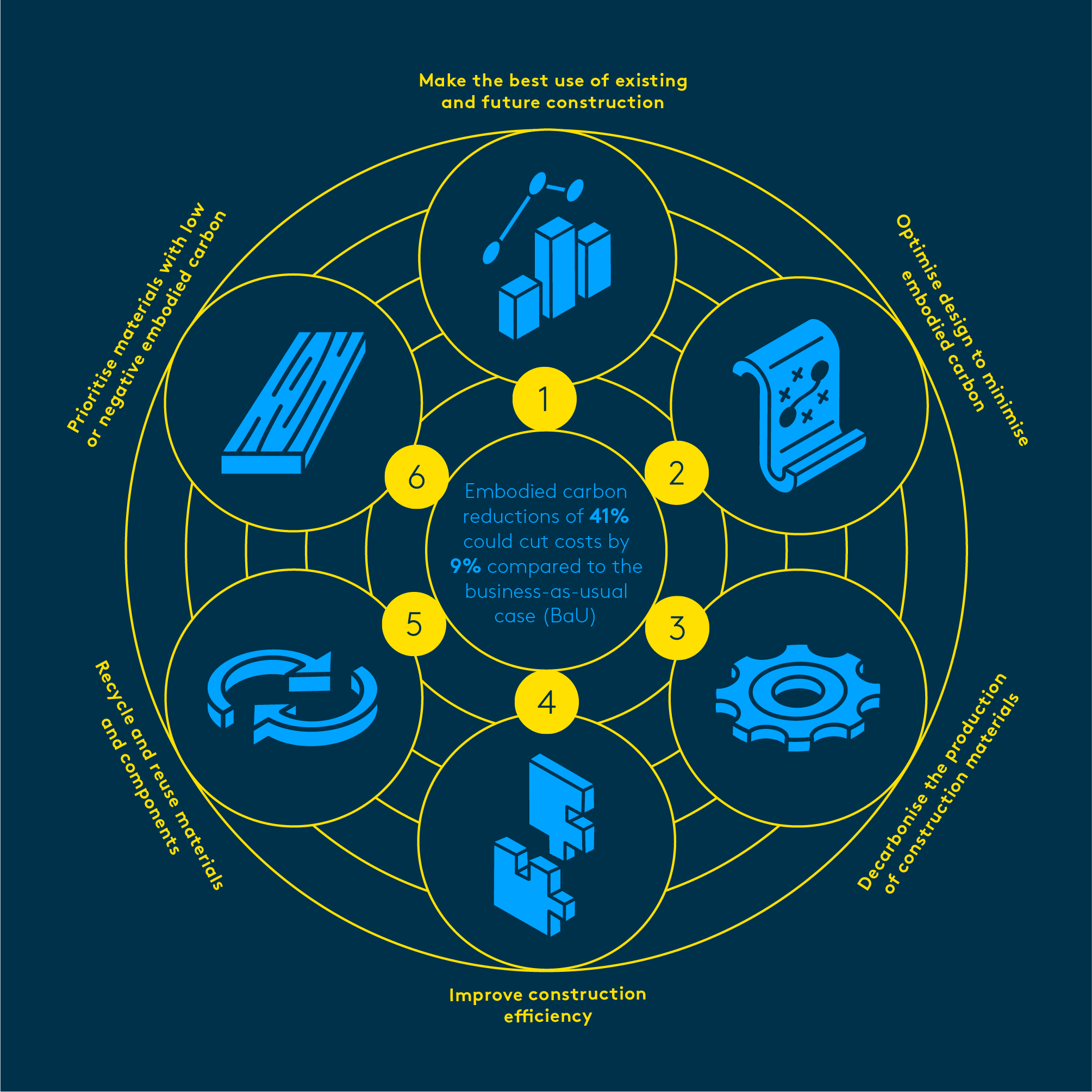This blog post examines the effects of reducing the embodied carbon of new construction, renovations and retrofits on the investment costs of a new building, piece of infrastructure or building renovation and retrofit project. It shows how different interventions affect both costs and embodied carbon
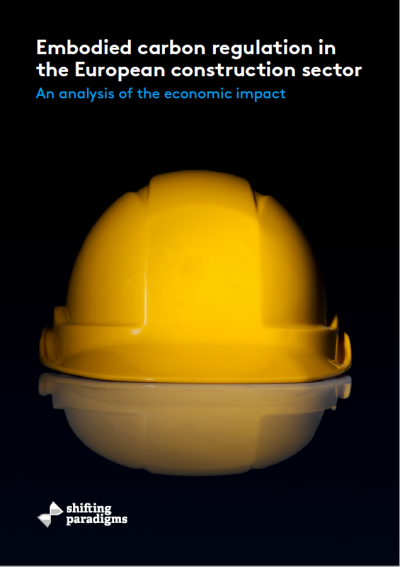
Embodied carbon refers to the GHG emissions of a product related to its material content and extraction, production, manufacturing, assembly and construction, and to maintenance, renovation, demolition and disposal or recycling (Figure 1). It excludes the operational greenhouse emissions of a building associated with to heating, cooling, ventilation, lighting and running equipment.
The literature on embodied carbon and costs impacts can be categorised into six main interventions to reduce embodied carbon. These interventions correspond well to circular economy principles to prioritise regenerative resources, extend the lifetime of existing assets, use waste as a resource, design for the future, and rethink the business model.
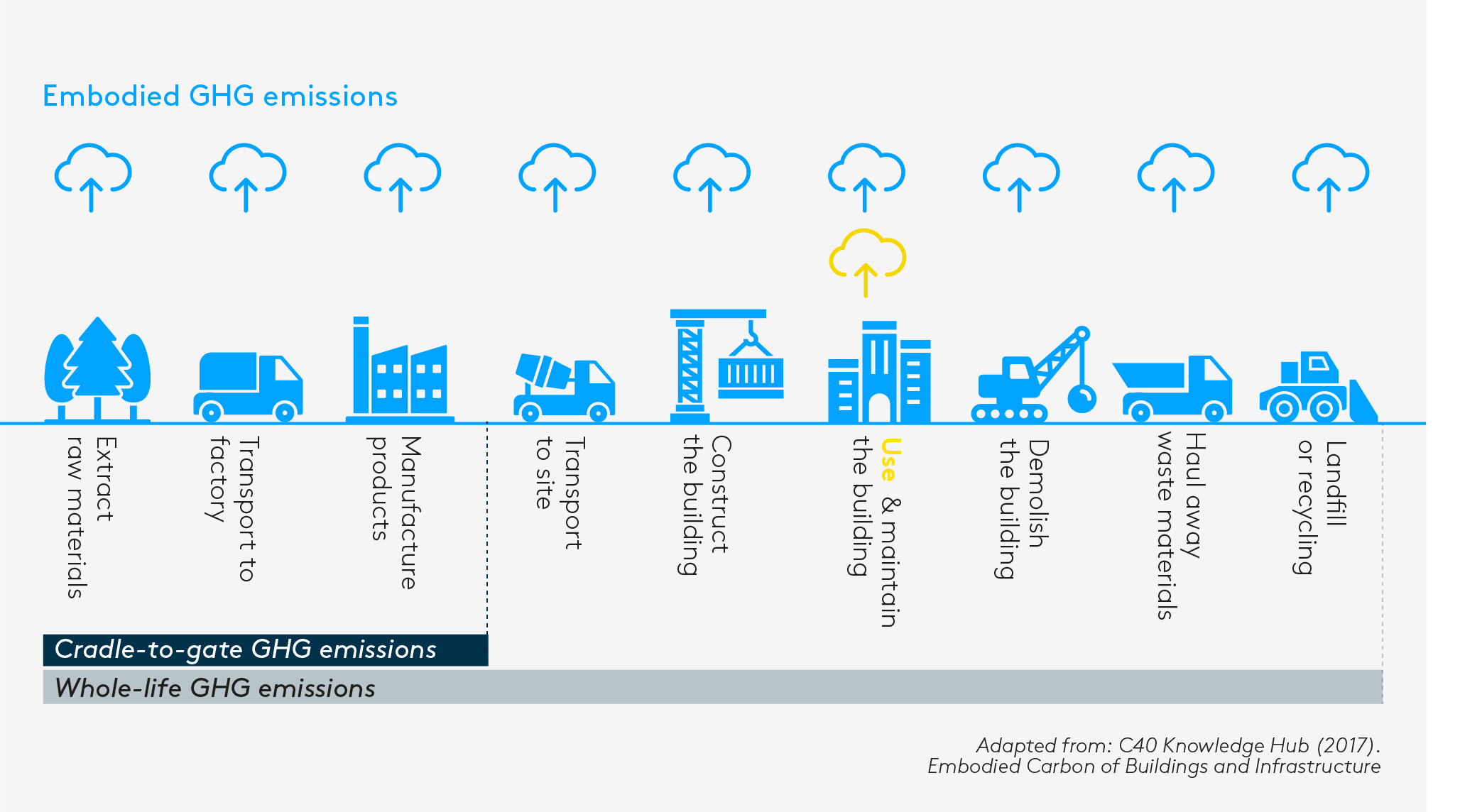
Figure 2 shows how the potential to reduce GHG declines at different project development stages. While many opportunities exist to reduce the embodied carbon footprint of new construction (interventions 2-6), efforts to minimise the need for new construction have the greatest impact per square metre (interventions 1a-1d).
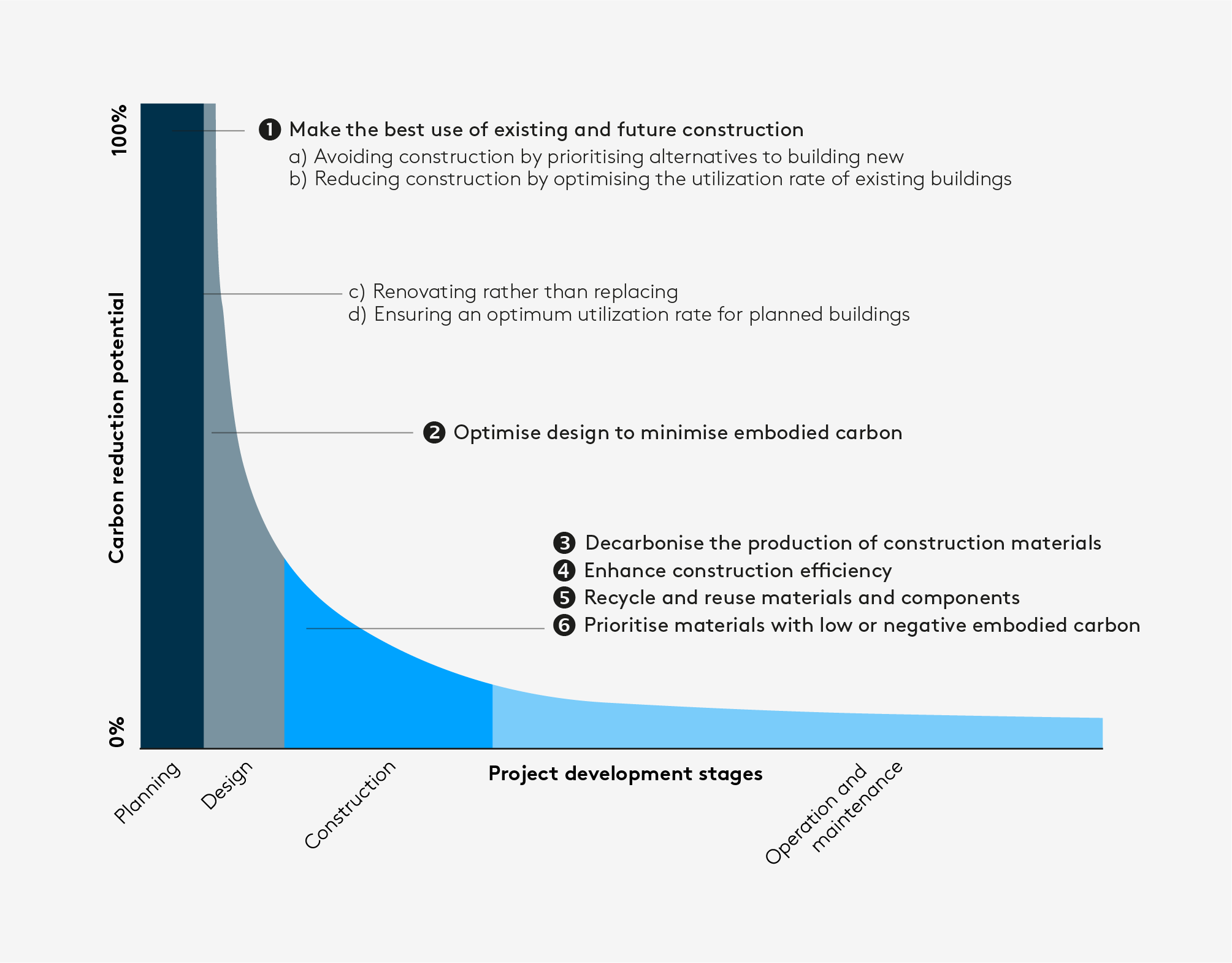
1. Make the best use of existing and future construction
Until construction practices have advanced such that the construction sector sequesters carbon in the built environment, regenerates ecosystems, restores biodiversity, and emits no waste, re-suspended dust particles or bituminous aerosols, efforts to avoid and reduce construction should receive priority over minimising its impact. This can be achieved by avoiding vacancies and low use rates through strategies such as:
- avoiding construction by prioritising alternatives to building new,
- reducing construction by optimising the utilization rate of existing buildings,
- Renovating rather than replacing
- Ensuring an optimum utilization rate for new buildings
2. Optimise design to minimise embodied carbon
The second intervention is to optimise the design of the building or piece of infrastructure to achieve an embodied carbon minimum. As shown in Figure 1, interventions at the early project development stages include a range of measures and the most effective combination can be chosen: recycling; re-use; prioritising low-carbon construction materials; design for disassembly; and avoiding overspecification that leads to designing structures for higher loads than necessary.
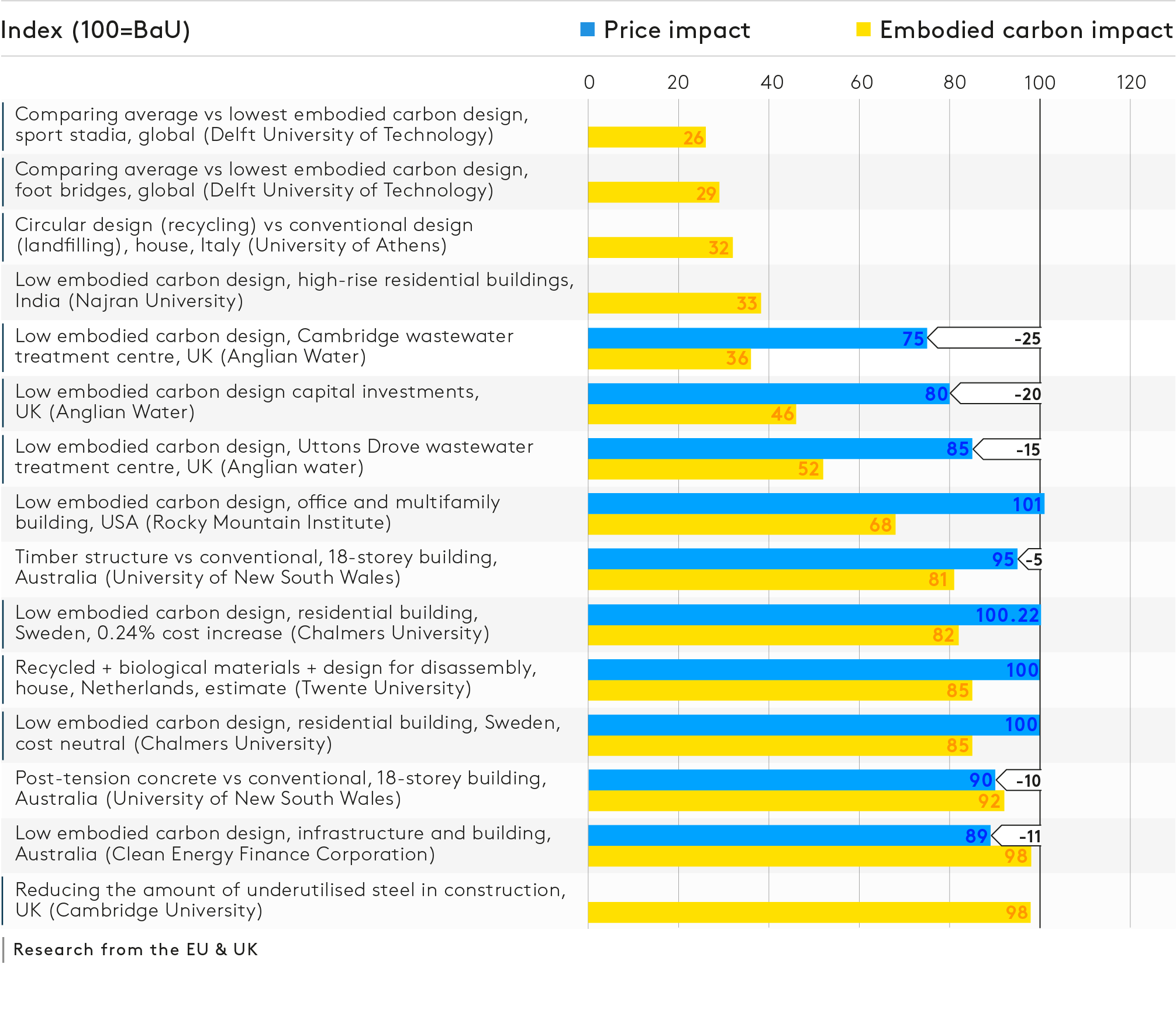
3. Decarbonise the production of construction materials
The third intervention focuses on the heavy industries that produce construction materials. It seeks to reduce the carbon footprint of construction materials by changing production methods, switching fuels and improving energy efficiency.
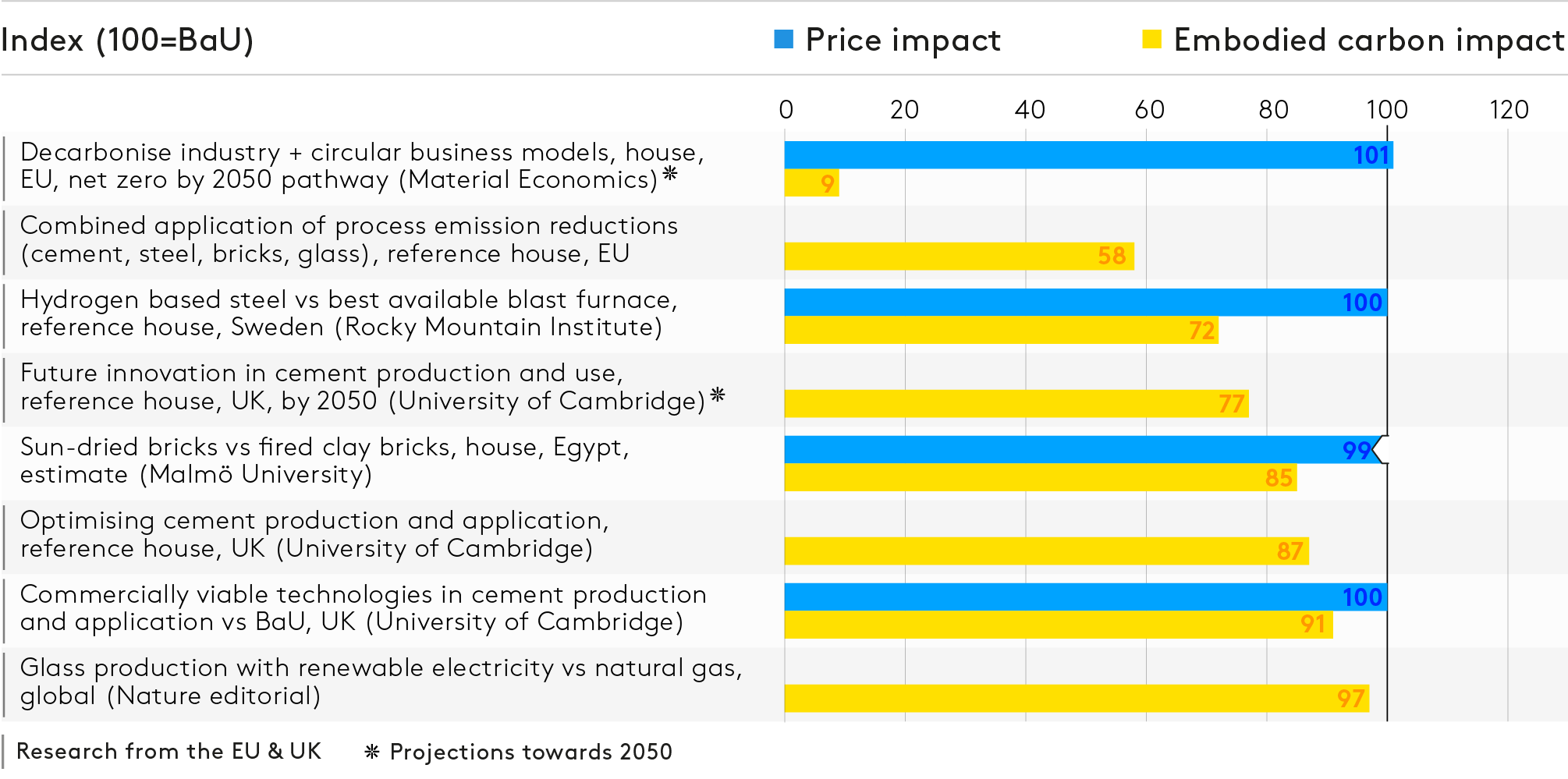
4. Enhance construction efficiency
The fourth intervention focusses on improving the construction process. Off-site and modular construction are typical methods; they involve completing part of the construction in a factory setting and assembling the finished modules onsite. This strategy abates GHG by reducing both material waste and transport movements.
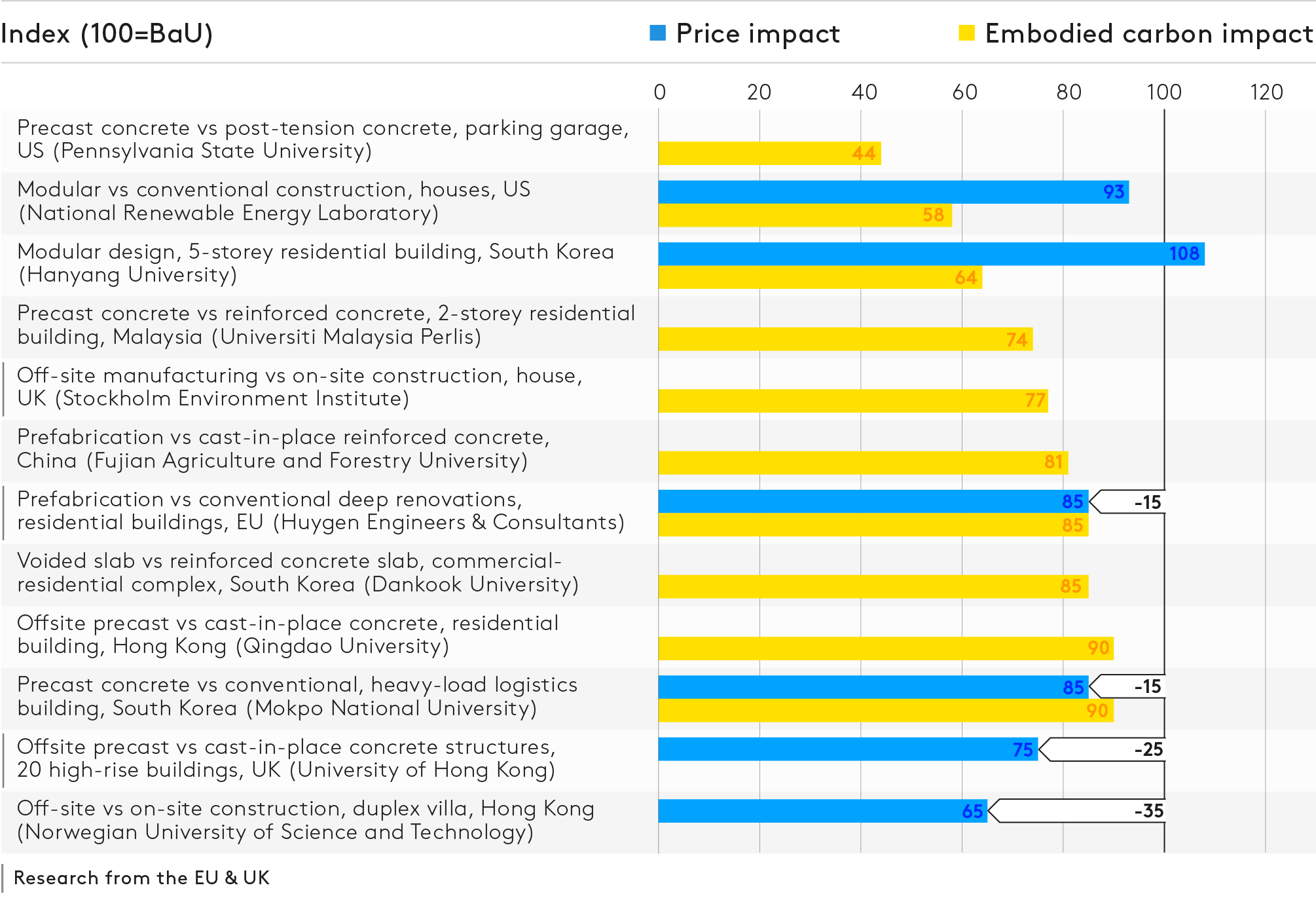
5. Recycle and reuse materials and components
The fifth intervention strategy is to improve the building’s end-of-life value and incorporate recycled materials and recovered construction elements in new buildings and renovation (Renovation and retrofitting, which could be considered a reuse strategy, are not included but were addressed in intervention 1).
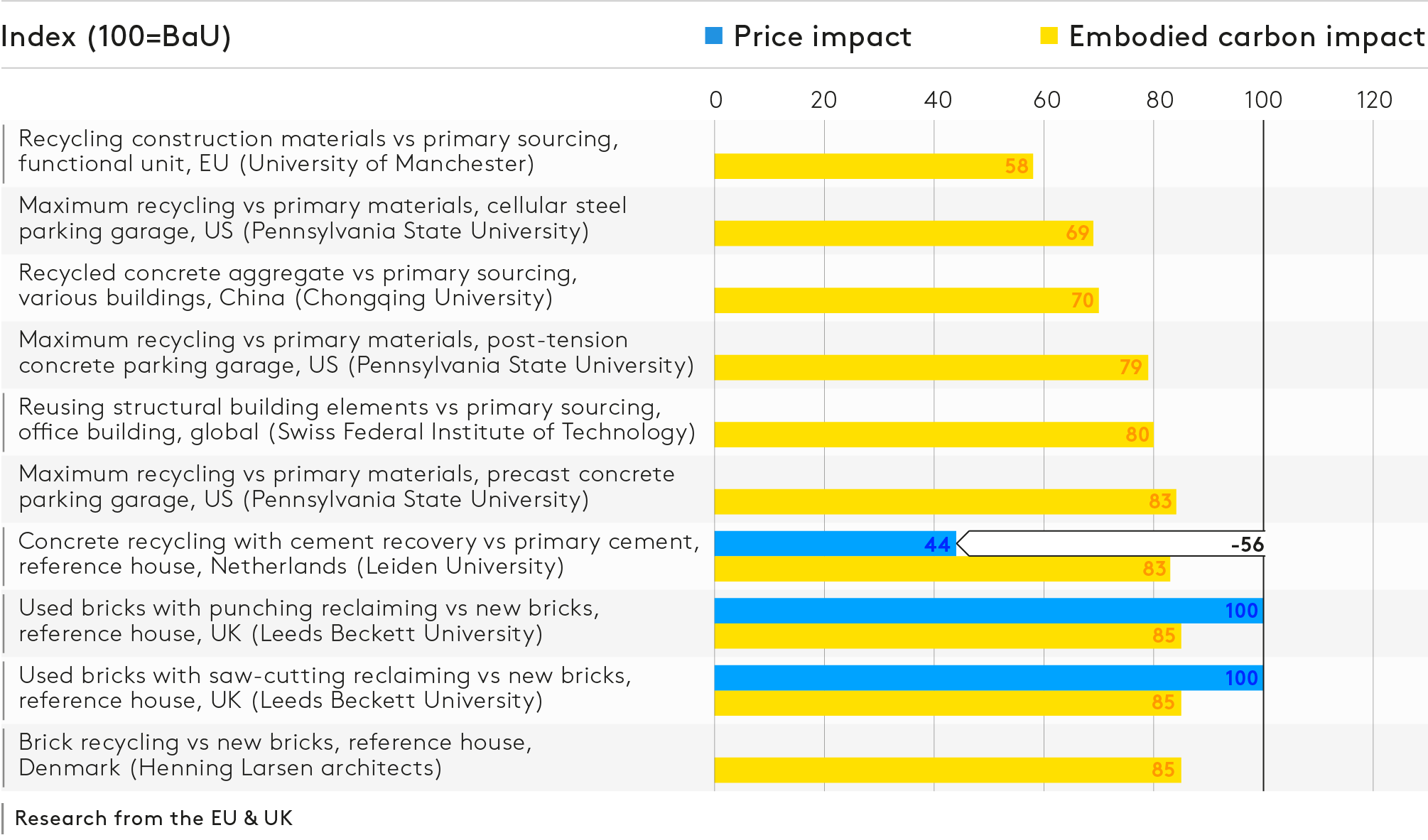
6. Prioritise materials with low or negative embodied carbon
Substituting conventional construction materials with alternatives with a low embodied carbon footprint or that can sequester CO2 can help reduce the carbon footprint of construction. Bio-based construction
materials — often referred to in European publications as ‘wood-based construction’ — offer such sequestration potential. Most life cycle scenarios assign lower CO2 emissions to wood-based construction than to concrete or steel frame buildings.
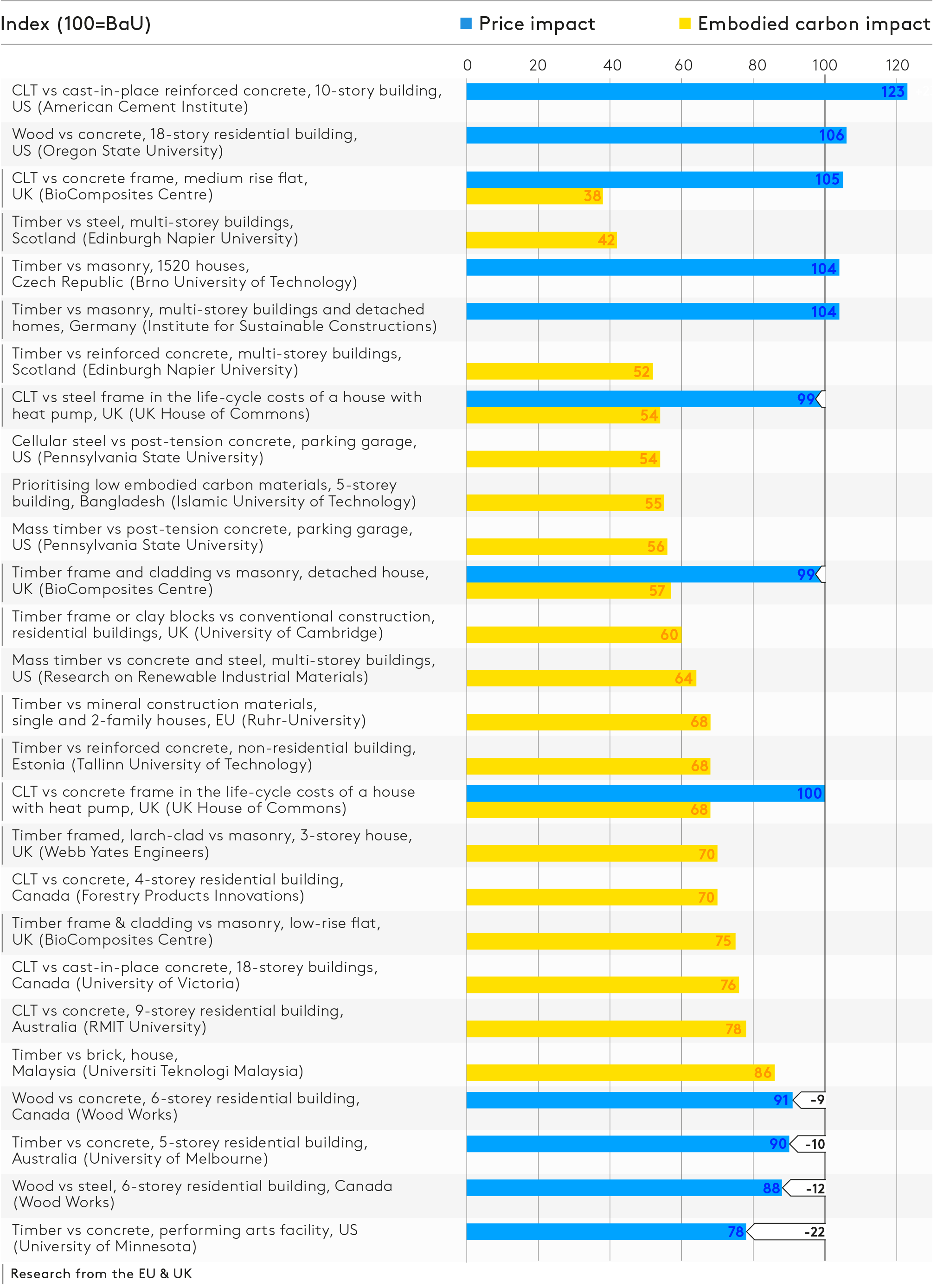
Conclusion
Most academic research finds that reducing costs and the carbon footprint of the construction sector go hand in hand, whether for individual interventions or combined ones. These results confirm the UK Green Building Council’s finding that “embodied carbon management may be seen as a proxy for cost management, providing an additional means of value engineering at early design stages.” The case studies examined include information on villas, single-family houses, multi-storey apartment blocks, offices, sport stadia, bridges, wastewater treatment plants and heavily loaded long-span logistics buildings from a range of countries. This broad scope enables us to extend the conclusions to residential buildings, commercial buildings and infrastructure.
The studies on sport stadia and bridges are noteworthy as they show that differences of up to 10-fold in embodied carbon may exist within specific building categories. Because differences in functionality or geographical factors cannot explain differences in embodied carbon, the potential to reduce embodied carbon through peer-to-peer learning is substantial. This also seems to suggest that embodied carbon is not an important design criterion worldwide. The impact of embodied carbon reductions on investment costs for design, recycling and reuse and improvements in construction efficiency is negative: costs will fall. The cost impact of investments in decarbonising the production of conventional carbon-intensive construction materials is close to neutral.
Cost increases are observed only when substituting materials, specifically when using engineered wood products rather than concrete. However, this outcome is influenced by data from the Concrete Reinforcing Steel Institute. If this single outlier from a non-academic source is excluded, the cost impact of material substitution is between cost neutral and -1%.
